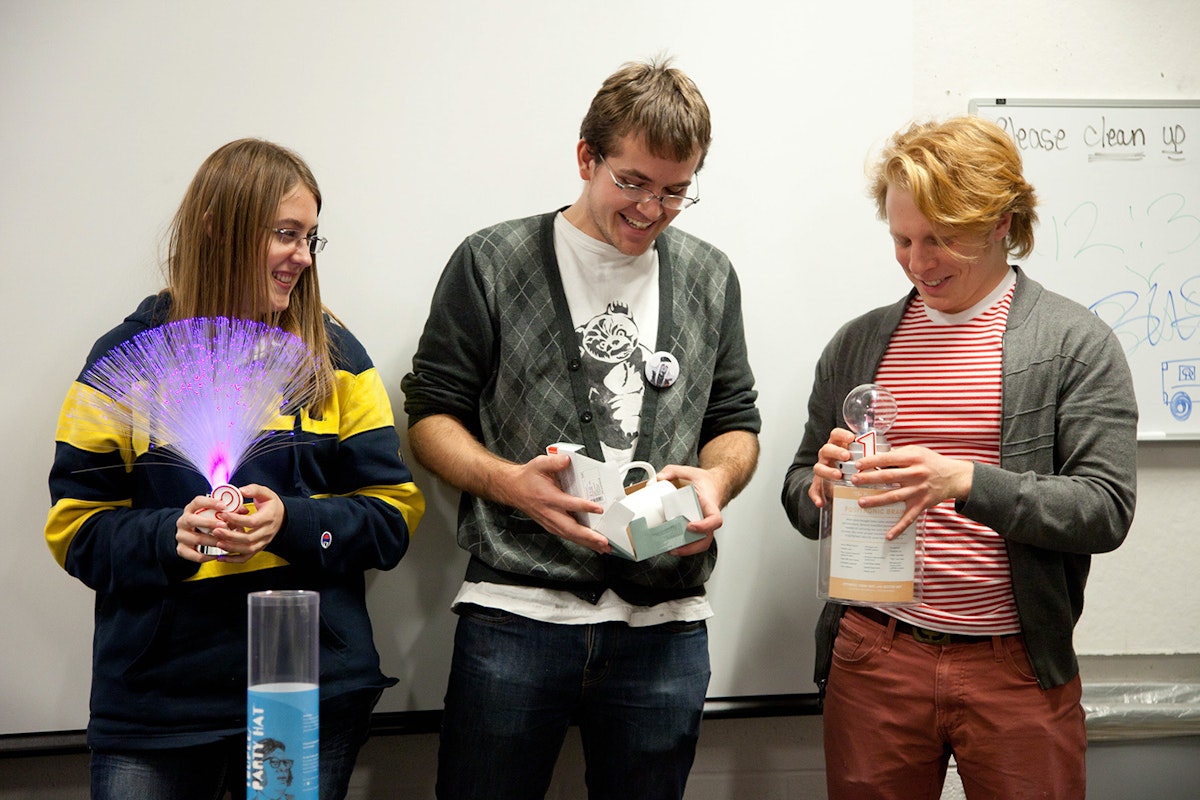Helping kids manage diabetes with video games
Managing diabetes is not easy. It requires constant blood sugar monitoring, an insulin shot four to six times a day and strict eating habits. It’s hard enough for adults to maintain the regimen, but getting young people to be disciplined about this kind of daily work is a job for, well, a video game.
A new collaboration at the University of Michigan matches young video game designers from the Stamps School of Art & Design with medical experts at the University hospital in order to explore non-traditional, even fun, approaches to a serious problem.
Dr. Joyce Lee, Associate Professor in the Department of Pediatrics at the University of Michigan Medical School, treats adolescents with Type 1 Diabetes and is co-director of Mott Mobile Technology for Enhancing Child Health (M2TECH), which is dedicated to developing mobile apps that will help teens take better care of their health. “We realized it was important to come up with new ways to motivate young people in their own care, because we want them to avoid diabetes-related complications,” says Lee. “And we realized we needed collaborators. We have the medical expertise, but what was missing was the creativity, the wonder, that artists and designers bring to a problem.”
Dr. Lee approached the Stamps School of Art & Design to seek out collaborators. There she discovered Matt Kenyon, a faculty member who specializes in code-based art/design and teaches popular classes in video game art and the new realm of creative apps.
Matt joined the Stamps faculty in 2011 to enhance the School’s program in new media, as part of a university-wide “cluster-hire” in computational media designed to strengthen the university’s research in this growing area. Kenyon and Dr. Lee received a Third Century Initiative grant to help launch their collaboration.
They decided to see what would happen if they gave the problem of diabetes management to students in Kenyon’s video game class. “These students are digital natives,” says Kenyon. “They grew up playing these games and are capable of rapid innovations.” Students spent the first part of the class learning the basics of game art: programming, graphics, interaction design and critical theory. They ended the semester with the diabetes assignment, using Stencyl, an intuitive design platform which allows designers to quickly and easily create games and apps without using code.
Dr. Lee provided the class with a “Diabetes For Designers” primer and visited the class to look at early prototypes and guide the process. The semester culminated in an end-of-the-semester party and game contest judged by Dr. Lee, Kenyon, and most importantly, 16-year-old Josh Luurtsema, who plays games and has diabetes.
Diagnosed with diabetes when he was just ten, Josh can't remember a time when he didn't have to check his blood sugar level and inject himself with insulin every time he wanted to eat something.

While, for Joshua, the daily regime is now more of “an annoyance” than anything else, he thinks the idea of the video game is invaluable for kids who have been just diagnosed. He was eager to see what the students came up with. “I was very curious and excited about the idea of a game to help kids manage diabetes. [At the judging party], I found multiple games that were fun, but the ones that also had an ultimate functionality to them were incredible. I can’t tell you how important these types of game could be for young kids just diagnosed. I saw some games that could really thrive if they were released into the market.”
Stamps student Sam Oliver, won first place for his game “Pixipal,” in which children teach themselves how to manage Type 1 Diabetes by caring for a digital pet. Oliver describes himself as a reformed video game addict, “I designed my game with my old addictions in mind. I set out to leverage the compulsive qualities that games can inspire, but to positive ends.”
In Pixipal, the child must feed and play with the pet to keep it happy, and is rewarded for his or her efforts with items and upgrades. In turn the pet “takes care” of the child, refusing to play until the child checks his or her blood glucose levels.

For Dr. Lee and Kenyon, this is just the beginning. “We’re now going to hire some of these students to develop the prototypes further,” says Lee. Next semester, Kenyon will continue the collaboration with students in his App class. ”For students who grew up playing games, it’s really empowering to become a maker and an essential part of a problem-solving team, whether it’s a healthcare issue, or other research areas here at the university.’” Kenyon says. “It’s an incredible opportunity and we’re just getting started.”
To help students, designers, and developers learn more about diabetes in order to create better solutions, Lee created Diabetes: A Guide for Designers, a primer on the disease.
And to help facilitate more of these kinds of collaborations, Kenyon and Lee recently set up Health Design Cupid, a "matchmaking" site for medical professionals and designers.